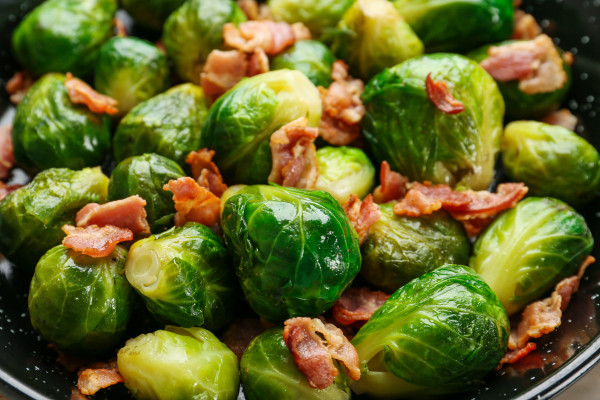Perhaps one of the most looked forward to meals of the year is Christmas dinner. For that reason, you’ve got to make it taste absolutely delicious so it’s worth the wait. Among the essentials are roast potatoes, glazed parsnips, carrots, and the controversial Brussels sprouts. Here’s a guide to growing your own festive food.
Growing your own vegetables for your Christmas dinner can have many benefits. Not only is the produce more nutritious, with higher concentrations of vitamins and minerals, but you’ll also have the great sense of pride, knowing that you have grown and nurtured the food on your plate.
Greens galore
Love them or hate them, Brussels sprouts deserve a space on your Christmas plate. Along with other brassicas such as broccoli, cabbage, and kale, they’re high in nutritional content. They are excellent sources of vitamins C, A, E, K, and folate, calcium, iron, potassium, and phosphorus.
Brussels sprout seeds can be sown indoors during February or March in modular seed trays. Alternatively, you can sow directly into the ground during March or April. For seeds germinated indoors, when the seedlings reach 10cm tall they can be hardened off ready for planting outdoors. When planting, leave approximately 70cm between each plant, so they have sufficient space to grow. Plant them quite deep into the soil, right up to the first set of leaves, and firm them in and water well.
Regularly draw up little earth around the base of the sprouts as they grow. This will prevent them from rocking too much in the wind which can damage the roots. During dry periods, water regularly and feed with a liquid fertiliser once every four weeks.
From November the sprouts will be ripe for the picking. Harvest gradually from the bottom upwards when they are close to table-tennis ball size. If they are yellowing, or have opened up, then they are past their best, so dispose of any that have in the compost bin.

Successful spuds
Growing your own festive food like potatoes means that you have better tasting ones, higher in vitamin C, vitamin B6 and potassium content, and the satisfaction that you have nurtured a delicious crop from scratch.
They can be grown from seed potatoes or tubers, which can be bought from your local garden centre. Plant these between March and May, although specifics will differ depending on the variety. Potatoes are commonly grown in the ground but they can be grown in large containers such as old wheelie bins or whiskey barrels filled with peat-free compost.
Dig a narrow trench about 10cm deep and plant your seed tubers into it with the shoots facing upwards and about 30cm between each one. Fill the trench with soil to cover the seed tubers completely. A scattering of granular plant food over the trench will give the crops a good start.
Potatoes will be ready from June through to December, depending on the type. One the foliage turns yellow and withers, remove it, then wait 10 days before digging them up. Lift out the spuds with a garden fork, taking care not to spike the potatoes themselves as you do.
Good roots
Carrots are a must-have for Christmas dinners. They can be planted between February and July for harvesting from May until October. Sow 1.5cm deep and 3 cm apart in rows 30cm apart. Then, after about 14-21 days, seedlings should have germinated. Once the carrots are established, the leafy foliage tops will help to block out sunlight which reduces the likelihood of weeds growing. Carrots will only need watering in dry spells. However, if the foliage does start to wilt, watering once ever 10-14 days will keep the ground moist. From sowing, it takes around 12-16 weeks for the crops to be ready to harvest.
Similarly, parsnips are an essential component to the meal, especially when glazed in honey and roasted – simply delicious. Parsnips can be sown from February to May and harvested between October and February. Sow the seeds 2cm deep, 15cm apart in rows 30cm apart. When the seedlings reach 2.5cm tall they can be thinned out to leave the strongest every 15cm apart. The tell-tale sign that the crops are ready to harvest is that the foliage has died down.
Storing carrots and parsnips in time for Christmas is easy. They can actually be stored in the ground where they were grown, as long as the space isn’t needed for other crops.


Leave A Comment